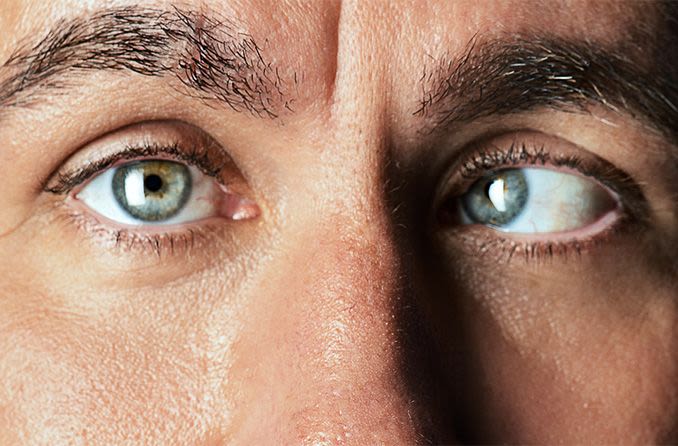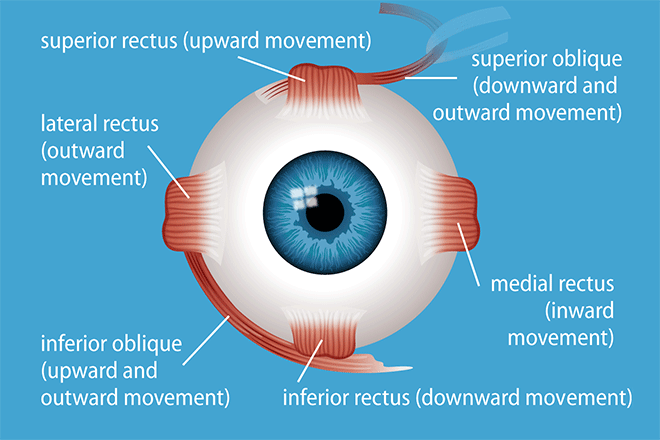Strabismus Surgery

To understand how strabismus surgery works, consider that each of your eyes has six outside (extraocular) muscles controlling eye movements.
If a muscle is too strong when you have strabismus, it may cause the eye to turn in, turn out or rotate too high or low.
On the other hand, an eye muscle weakness in certain cases may also cause misalignment. This condition may occur if you have a cranial nerve dysfunction affecting how eye muscles control movement.
Fortunately, your ophthalmologist has various surgical options to help correct these types of problems.
Strabismus Surgery Involving Recession And Resection Procedures
In a recession procedure, your eye surgeon detaches the affected outside muscle (extraocular muscle) from the eye and reattaches it (resection) farther back on the eye to weaken the relative strength of the muscle if it is too strong.
In contrast, if the muscle is too weak, your surgeon may use a recession procedure to reduce strength of the opposing muscle (antagonist) to achieve more balanced function of the eye muscles.
In certain cases, a resection procedure may be used to strengthen an eye muscle to correct misalignment associated with strabismus. If you have inwardly turned eyes (esotropia), the surgeon may strengthen the lateral rectus muscles — located on the side of each eye, toward the ear — by reattaching the muscle in a different location (resection). In this way, the lateral rectus muscles are relatively strengthened and they can turn the eyes farther outward. This results in better eye alignment.
SEE RELATED: Corneal light reflex
Adjustable Suture Strabismus Surgery
With adjustable suture eye muscle surgery, your surgeon adjusts sutures holding eye muscles in place after a resection procedure, to attempt to improve your final outcome.
Generally this surgery is possible only in adults, with perhaps only a small percentage able to benefit. This surgery is probably best for someone in whom strabismus developed in adulthood after previously normal eye alignment.
In this case, the person is a good candidate because of fusion potential — the ability of both eyes to "lock on" to a target simultaneously, resulting in stereovision and a high degree of depth perception.
In most cases, adjustable suture surgery is performed in the operating room, with general or local anesthesia. Afterward the eye is patched. About four to 24 hours later, the patch is removed in the office, when anesthesia and sedation have faded. Ocular alignment is then evaluated.
Based on how your eyes are aligned, your surgeon may decide to use the suture that is in place to tighten or loosen the treated muscle. This adjustment may cause slight discomfort, primarily with muscle tightening.
Once the desired alignment is achieved, the surgeon ties the adjustable suture permanently in place, and the procedure is complete.
Guess Who Had Strabismus?
In some photos and portraits of President Abraham Lincoln, you can see that his left eye tended to look upward. Apparently he had strabismus.

According to observers, this occurred especially when he was tired or excited, and it was apparent during his famous 1860 presidential election debates with Stephen Douglas.
Because his right eye was the dominant one, he used it much more, such as for reading, than his left eye. The condition may have caused his periodic double vision, as well.
That's not all: The 16th U.S. president was kicked in the head by a horse when he was 10 years old, and today we speculate that he may have suffered some nerve damage that caused a droopy left eyelid.
Source: American Academy of Ophthalmology
What To Expect After Strabismus Surgery
Your eyes will be red and somewhat sore after strabismus surgery. You probably will see obvious bright red blood in the surgical area, usually toward the inside or outside corner of the eye. This is normal and is equivalent to bruising of your skin.
Any broken blood vessels in the eye and general eye redness should fade within two to three weeks. You may feel like something is in your eye, but this sensation will subside. Usually you can resume normal activities within a few days.
During the first few days after surgery, eye alignment is a good indicator of the final outcome. However, more permanent results may not be known until four to six weeks after surgery.
Children younger than 10 will very likely need a second or third strabismus procedure to maintain the best possible eye alignment. In some cases, eyeglasses or special lenses (prisms) placed in a pair of glasses may help fine-tune the way both eyes work together (binocular vision). [Read answers to common patient questions about strabismus surgery.]
SEE RELATED: Exotropia (wall-eyed): The basics
Page published on Wednesday, February 27, 2019







